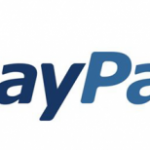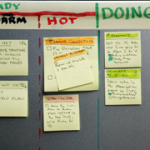
Imagine visiting a new town every day, skipping from one country to another over the course of a few weeks.
Sounds like an ideal vacation… but it’s an even-better job.
More and more people are making the decision to become a location-independent, traveling entrepreneur. Below I’ll walk you through how to become a “digital nomad” in five steps.
#1 Save up Money
Before you jump out of an airplane, you strap on a parachute. Before you hop on the nomad trail, you make sure that you have some cash saved up so that you can ride out the rough patches.
“Put your head down and put away some money,” advises Matt Wilson (Under 30 CEO). He continues, “You need some savings… as a buffer if you are going to make a long-term habit of living outside of the United States.”
How much Money Should You Save?
The answer depends on (A) the cost of living per month where you’re going, (B) the cost of travel to/from this location, and (C) how much your willing to go without luxury and security. You’ll also want to consider the travel cost of renewing your visa every 30, 60, or 90 days.
Let’s say I want to begin my nomad life in Costa Rica. I’m going to need at least enough money for the flight to and from Denver (about $600). Then I’ll need about $500 for the first month of food, lodging, wifi, and bus fare. Then it’s just a matter of how much I would want for luxuries (about $100) and a “rainy day fund” (let’s say $2800).
For this example, I would save up $4000 before buying my ticket to San Jose. Depending on where you’re at in life, that may seem like a fortune or chump change.
Given the risk of your laptop breaking, you needing medical attention, or your best friend getting married back home… it’s always a good idea to save up more money than you think you’ll need.
…or Don’t
“Leap and the net will appear.”
Zen saying
Like to take risks? Thrive under pressure?
If so, you don’t have to save up much money before you start. John Bardos of Jet Set Citizen had just $1000 dollars to his name when he arrived in Japan and began his life as a nomadic entrepreneur. Bardos hit the ground running and never looked back. He says, “It was easy because I had nothing to lose.”
Not having a financial safety net will motivate you to succeed, since you won’t have any other choice. Still, I recommend you have at least enough money for one month’s rent and transportation to get home at all times.
#2 Get the Essentials
Some items are no-brainers. If you’re a photographer, obviously you’re going to need your camera. Most everyone is going to need a laptop and a padded bag for it. Of course, you won’t forget your toothbrush.
Here are some essential items and resources that you may not have thought of:
External GPRS/EDGE/3G USB Modem
These little doodads plug into a USB port and turn a cell phone data network into an Internet connection. This vastly expands the number of locations you’ll be able to work while traveling.
Theft Protection Software
For most digital nomads, their laptop is their livelihood. But the value of electronic devices also makes them attractive to thieves.
If your laptop, tablet, or smart phone is ever stolen or misplaced while traveling you’re going to wish you had a way of locating it remotely. Prey anti-theft software is just that. Registering up to three devices is free and it only takes a couple minutes.
Online Backup
Services like Mozy offer regular cloud-based backups in case anything goes awry. For one computer, it can cost as little as $5.99 per month (about $72 per year).
External Hard Drive
As a video producer, my work eats up Gigabytes like PacMan eats dots. For me, an external hard drive is the cost of doing business.
But even if you don’t need an external hard drive for the storage, you should have one for a backup. Online backups are great, but you won’t always have access to a consistent, high-speed Internet connection.
You can pick up a 1TB external hard drive for under $100.
Pocket Notebook
When you’re hiking the Himalayas, you may not have your laptop handy. Ditto for when you’re laying on the beach.
But those are both times when you’re likely to feel inspired and creative. Always have a notebook on you and you’ll always be able to catch lightning in a bottle for your business – even when it strikes in the most remote of places.
A Grasp of the Language
A few important phrases in the native language goes a long way. I’ve personally used DuoLingo to sharpen up my Spanish. It’s amazingly robust (and free!) language learning software.
Unless you’re fluent, pick up a travel-sized phrasebook. Once you’ve settled in, look around for a tutor. One-on-one lessons are highly effective and may be surprisingly inexpensive.
Eliminate the Unnecessary
I just listed some of the things you’ll need to have as a digital nomad, but the list of things that you’ll need to lose is even longer. It’s important to travel light. You’ll probably have to shed the majority of your possessions unless you’ve got some generous friends/family with a big garage.
#3 Choose a Starting Location
Here are a few of the more popular countries for digital nomads:
– Thailand
– Cambodia
– Argentina
– Columbia
– Laos
– Vietnam
– Malta
– Costa Rica
There are hundreds of different factors to consider, but ultimately there’s no “best” country for digital nomads. Whether you carefully weigh your options or picking a starting location at random, the most important thing is having the right attitude (and a wifi connection, of course).
#4 Find a Reliable Location-Independent Income
Earning money is about providing value to others. The Internet has made it possible to provide value to people who live very far away from you, all around the world. It isn’t easy to do, but it is easier than ever before – thanks in part to sites like Income Diary that are completely devoted to teaching people how to make money online.
Many nomad entrepreneurs have single-person businesses that are based on providing a service (much like freelancing). This is the quickest path to being able to finance a nomadic lifestyle. If you’re interested in this path, I’ve written a guide on how to make money with a service business and another on how to attract leads and clients online.
Here are some of the more common fields for nomad entrepreneurs to take up:
The Written Word
The market for people who can write high-quality blog posts has never been larger. You could finance a modest lifestyle in many countries by writing four articles like this one per month. Of course, this job also requires an understanding of online publishing, SEO, photo-editing, and more.
There’s also work to be found transcribing, editing, and translating text.
Digital Media Specialist
If you’re a graphic designer, web developer, or software programmer, you know that there’s not much difference between working 10 miles away from your client or 1000 miles away.
Photography and video production are also well-suited to location-independence. Plus, you’ll surely find plenty of inspiring vistas to capture on your travels.
Remote Work Agreements
Increasingly, businesses are allowing their employees to work remotely. It saves on office space and can lead to higher employee satisfaction and productivity. If you’ve already got a good job and you don’t technically need to be on-site to do it, consider asking your boss if you can work remotely.
Passive Income
Developing a passive income takes more time but also offers a greater reward at the end. Create a great website, cultivate an audience of people who trust you, and you could one day make a six-figure income by selling ad space and products.
The List Goes On…
Nomadic jobs are only limited by your imagination. Nunomad’s list of location-independent careers includes everything from the bizarre (balloon artist) to the mundane (insurance agent) and everything in between (consultant, coach, camel trainer, radiologist, property manager, virtual assistant, English teacher, dancer, and importer).
#5 Hire a Virtual Staff
What’s the fun of traveling the world if you have stare at a computer screen eight hours a day, five days a week? Most businesses require daily attention to keep running smoothly – and if you’re on safari in the Serengeti, that’s just infeasible.
The solution: a virtual staff to pick up the slack.
I’ve never hired a virtual staff member myself, so this section is reinforced by one of the world’s leading experts on outsourcing, Tyrone Shum. Back in 2005, Shum started an online Dragonboat paddle business. Business was so good that Shum was working 60 hours a week. That’s when he decided to hire a virtual staff. Within six months, Tyrone was working just 10 hours a week.
Use a Virtual Staff-Finding Service
If hiring someone who lives in a different country to be a part of your business sounds like a daunting task to take on on your own, you’re right. Tyrone Shum told us about his misguided first attempt:
“When I first started, I spent weeks on end trying to find the right person, to negotiate the best price, the best working conditions, and all that kind of stuff. But in the end, they didn’t even stay.”
from Web Domination 20
After this, Shum turned to a virtual staff-finding service and he’s never looked back. He recommends Virtual Staff Finder: “They go through the whole process and you pay a one-time fee. They come back to you with three candidates, you meet them and find out if they’ve got the right skills for you, and then – bang – you’re up and away.”
Start with a Virtual Assistant
Eventually, you may want to hire a whole staff: programmers, designers, writers, and more. But Shum says that “the first position to outsource is a virtual assistant.” Virtual assistants can do anything from handling your emails to maintaining your blog to running your social media.
They give you more time to focus on growing your business – and allow you the freedom to go on adventures without the gears of your business grinding to a halt.
How much does it Cost to Hire a Virtual Assistant?
The price is always in flux. Shum told us that when he started the going rate for a full-time virtual assistant was “roughly $300 a month” but that the price had already crept up to $450/month.
More skilled positions, like web developers, will be a bit pricier.
Note: If you’re really serious about outsourcing, I recommend you check out our interview with Tyrone Shum in Web Domination 20. He goes into detail about his hiring process, his management style, and what he’s learned to look for in a virtual staff candidate.
Ready to Become a Traveling Nomad Entrepreneur?
Then book your flight and pack your bags! If you’re still not sure what you want out of your work and life, you may want to check out our page on how to get your ideal lifestyle as an entrepreneur.
Post Image Photo Credit: Claudio Vaccaro.













